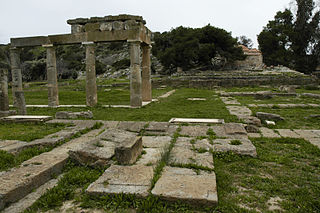
Brauron was one of the twelve cities of ancient Attica, but never mentioned as a deme, though it continued to exist down to the latest times. It was situated on or near the eastern coast of Attica, between Steiria and Halae Araphenides, near the river Erasinus. Brauron is celebrated on account of the worship of Artemis Brauronia, in whose honour a festival was celebrated in this place. This site includes the remains of a temple, a stoa, and a theatre, providing insights into the religious practices and social life of ancient Greece. Its significance as a religious and cultural site can be further understood through the exploration of its archeological remains and historical accounts.
Tille Höyük is an archaeological site in at Geldibuldu village in the Adıyaman Province of Turkey. It is a small settlement mound on the west bank of the Euphrates some 60 km east of Adıyaman.

Weirsdale is a town in Marion County, Florida, United States. It is located near the intersection of State Road 25 and State Road 42. The community is part of the Ocala Metropolitan Statistical Area.
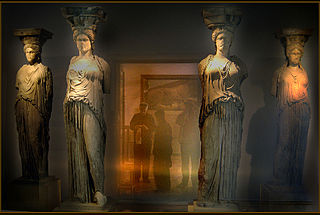
The Old Acropolis Museum was an archaeological museum located in Athens, Greece on the archeological site of Acropolis. It is built in a niche at the eastern edge of the rock and most of it lies beneath the level of the hilltop, making it largely invisible. It was considered one of the major archaeological museums in Athens. Due to its limited size, the Greek government decided in the late 1980s to build a new museum. The New Acropolis Museum is now built at the foot of the Acropolis. In June 2007 the old museum closed its doors so that its antiquities could be moved to their new home, which opened on 20 June 2009.
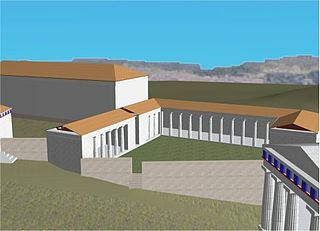
The Brauroneion was the sanctuary of Artemis Brauronia on the Athenian Acropolis, located in the southwest corner of the Acropolis plateau, between the Chalkotheke and the Propylaea in Greece. It was originally dedicated during the reign of Peisistratos. Artemis Brauronia, protector of women in pregnancy and childbirth, had her main sanctuary at Brauron, a demos on the east coast of Attica.

The Archaeological Museum of Piraeus contains mainly sculptures, discovered in Piraeus and in the area of the Attic coast from Bronze Age to Roman times,
Pieridis Museum is a museum in Athens, Greece. Its collection includes items dating back almost nine thousand years, from the neolithic period to the Middle Ages. They are a part of the archaeological collection of the Pierides Museum in Larnaca, Cyprus. It is situated in the Athinais Culture Center in Votanikos, about 2 km west of downtown Athens.
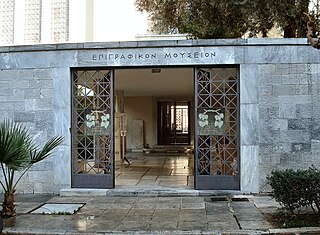
The Epigraphical Museum of Athens, Greece, is unique in Greece and the largest of its kind in the world. Its collection comprises 14,078, mostly Greek, inscriptions, which cover the period from early historical times to the Late Roman period, primarily in Greece. It is situated in the south wing of the National Archaeological Museum of Athens. It comprises an internal and external courtyard (atrium), a lobby, eleven rooms, a large hypostyle Pi-shaped corridor, a gallery, offices, a laboratory for the conservation of inscribed stone monuments and lavatories. Only the courtyards, lobby and four rooms are open to the public, while the rest is reserved for researchers. A full photographic archive of the collection is being assembled for future visitors.
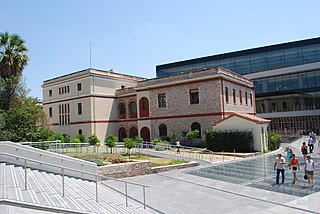
The Museum of the Center for the Acropolis Studies is a museum in Athens, Greece, a part of the new Acropolis Museum and its research workshops. It is housed in the Weiler Building, named after the Bavarian engineer who designed it in 1834 and constructed it in 1836. It was created under the direction of the archaeologist Evi Touloupa while she was director of the Athens Ephorate of Prehistoric and Classical Antiquities.

The Museum of Anthropology, University of Athens is an educational museum in Athens, Greece. It was founded at the University of Athens in 1886. The museum was initially established as part of the university's medical school, in its department of histology. The museum's founder, Klon Stephanos, has been described as the "father of physical anthropology" in Greece, Under Stephanos, the museum emphasized its function as research laboratory, rather than as a venue for public displays. It received many early contributions from the medical faculty in the area of anatomical pathology, as well as becoming an important repository within Greece for historical anthropological specimens that had in the past been sent to foreign institutions.

The Rampin Rider or Rampin Horseman is an equestrian statue from the Archaic Period of Ancient Greece. The statue was made of marble and has traces of red and black paint.
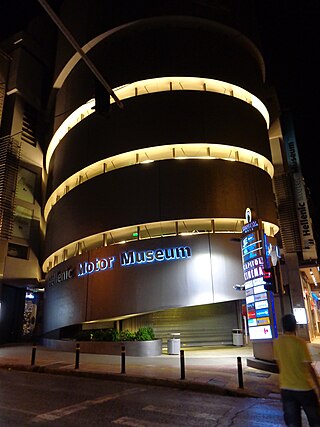
The Hellenic Motor Museum is a car museum in Athens. It is owned by the Theodore Charagionis Foundation and opened in March 2011. The museum is situated in central Athens near the National Archaeological Museum, on the three top floors of the Athenian Capitol shopping mall.

Dionysiou Areopagitou Street is a pedestrianized street, adjacent to the south slope of the Acropolis in the Makrygianni district of Athens. It is named after Dionysius the Areopagite, the first Athenian convert to Christianity after Apostle Paul's sermon, according to the Acts of the Apostles, and patron saint of the city of Athens.

The Kerameikos Archaeological Museum is located in Kerameikos, Athens, Greece and was built in 1937. It houses many important early Geometric art pieces that date as far back as 860 BC. It was expanded in the 1960s by the Boehringer brothers of Boehringer Ingelheim fame. Its official address is Ermou, Athens 125, Greece.
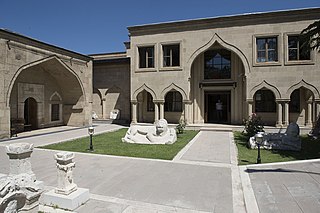
Burdur Archaeological Museum is an archaeological museum in Burdur, Turkey. The museum, formally established in 1969, had a collection of 52,941 objects as of 1997. It is divided into three main areas: the Garden, the Statue Hall, and the Small Monuments Hall.
Cephale or Kephale was a deme of ancient Attica of the phyle Acamantis, that appears, from the order in which it occurs in the list of Pausanias, to have been situated south or east of Hymettus, perhaps in the neighbourhood of Brauron, where Ludwig Ross found an inscription containing the name of this deme. Cephale possessed a temple of the Dioscuri, who were here called the Great Gods.
Kilis Museum is a museum in Kilis, Turkey
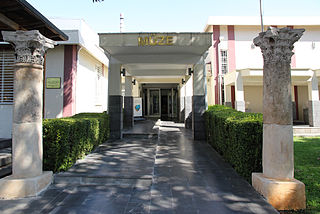
Kahramanmaraş Archaeology Museum is a museum in Kahramanmaraş, Turkey. The museum is on Azerbeycan Boulevard in Kahramanmaraş. Its geographic coordinates are 37°34′26″N36°55′34″E.
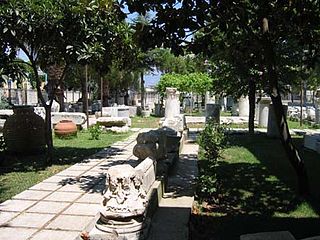
Milas Museum is a museum of archaeology and ethnography in Muğla Province of Turkey.
Philaidae or Philaidai was a deme of ancient Attica, which appears to have been near Brauron, since it is said to have derived its name from Philaeus, the son of the Telamonian Ajax, who dwelt in Brauron. Philaïdae was the deme of Peisistratus.















